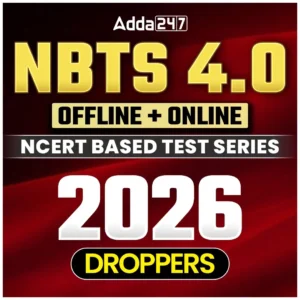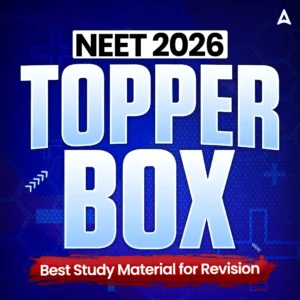CBSE Class 11 Home Science Syllabus 2025-26: The NCERT Class 11 Home Science Syllabus course is divided into five modules, beginning with an introduction to Home Science that establishes its relevance and breadth. It then looks into Human Development over the lifespan, focusing on adolescence, childhood, and adulthood while emphasising physical, emotional, and social growth. This subject aims to provide learners with a purposeful life, build 21st-century skills, and prepare them for jobs and careers. The home science subject offers diverse alternatives for higher education and career advancement. Get the new Home Science syllabus PDF for 11th class below.
CBSE Class 11 Home Science Syllabus 2025-26
The CBSE Class 11 Home Science syllabus 2025-26 academic year provides a thorough examination of numerous aspects of personal and societal development. Students who study the Home Science subject serve health and service institutions, educational organisations, textile, garment, and food industries, as well as instructional materials and ergonomic equipment. This field applies science and humanities to enhance the human environment, family nutrition, resource management, and child development.
Class 11 Home Science Syllabus 2026 Marking Scheme
The table below shows the CBSE Class 11 Home Science Syllabus 2025-26 academic structure with marks sistribution.
| No. | Units | Marks |
| 1 | Introduction to Home Science | 2 |
| 2 | Understanding Oneself: Adolescence | 20 |
| 3 | Understanding Family, Community, and Society | 15 |
| 4 | Childhood | 15 |
| 5 | Adulthood | 18 |
| Total Theory Marks | 70 | |
| Practical Marks | 30 | |
| Grand Total | 100 |
NCERT Class 11 Home Science Syllabus 2026 Detailed
Subsequent sections of the NCERT Class 11 Home Science Syllabus 2026 cover Food, Nutrition, Health, and Fitness, as well as Family and Community Resources, offering insights into nutritional well-being and resource management.
CBSE Class 11 Home Science Syllabus 2025-26 For UNIT I
This unit provides an introduction to the field of Home Science. It lays the foundation for understanding the different areas of Home Science, its significance, and its relevance for both boys and girls.
What is Home Science : An interdisciplinary field focusing on the well-being of individuals, families, and communities through subjects like nutrition, health, and family management.
Areas of Home Science : Includes Nutrition and Health, Human Development, Family Resource Management, Textiles and Clothing, and Extension Education.
Home Science is Important for Both Boys and Girls : It equips both boys and girls with practical life skills like cooking, budgeting, and time management.
Career Options in Home Science : Careers include Nutritionist, Fashion Designer, Child Development Specialist, Educator, Entrepreneur, and Therapist.
CBSE Class 11 Home Science Syllabus For UNIT II : UNDERSTANDING ONESELF: ADOLESCENCE
Unit II focuses on the adolescent stage, helping students understand their personal identity, health and nutrition, communication skills, and resource management. It also discusses the development of self-concept and the influences of biological, socio-cultural, emotional, and cognitive changes.
CHAPTER: UNDERSTANDING THE SELF
What is Self?
Personal dimension
Social dimension
Self-concept
Self-esteem
What is Identity?
Personal identity
Social identity
Self during Infancy: Characteristics
Self during Early Childhood: Characteristics
Self during Middle Childhood: Characteristics
Self during Adolescence: Characteristics
Identity development
Identity crisis
Real vs Ideal self
Influences on Identity
Developing a sense of self and identity
Influences on formation of identity
Biological and physical changes
Socio-cultural context
Emotional changes
Cognitive changes
CHAPTER: FOOD, NUTRITION, HEALTH AND FITNESS
Introduction
Definition of:
Food
Nutrition
Nutrients
Balanced Diet
Definition
RDA
Health and Fitness
Using Basic Food Groups for Planning Balanced Diets
Food guide pyramid
Vegetarian Food Guide
Dietary Patterns in Adolescence
Irregular meals and skipping meals
Snacking
Fast foods
Dieting
Modifying Diet-Related Behaviour
Diet journal
Exercise
Substance use and abuse
Healthy eating habits
Snacks
Drinking water
Factors Influencing Eating Behaviour
Eating Disorders at Adolescence
Key terms and their meaning
CHAPTER: MANAGEMENT OF RESOURCES
Introduction
Classification of Resources
Human / Non-Human Resources
Individual / Shared Resources
Natural / Community Resources
Human and Non-Human Resources
Knowledge
Motivation/Interest
Skills/Strength/Aptitude
Time
Energy
Money
Material resources
Human Resources
Non-Human Resources
Individual and Shared Resources
Individual Resources
Shared Resources
Natural and Community Resources
Natural Resources
Community Resources
Characteristics of Resources
Utility
Accessibility
Interchangeability
Manageable
Managing Resources
Management process
Planning
Steps in Planning
Organizing
Implementing
Controlling
Evaluation
CHAPTER: FABRIC AROUND US
Definition of:
Yarns
Fibres
Textile products
Finishing
Introduction to Fibre Properties
Classification of Textile Fibres
Filament/Staple fibres
Natural/Manufactured (Manmade) fibres
Types of Natural Fibres
Cellulosic fibres
Protein fibres
Mineral fibres
Natural rubber
Types of Manufactured Fibres
Regenerated cellulosic fibres
Modified cellulosic fibres
Protein fibres
Non-cellulosic fibres
Mineral fibres
Some Important Fibres and Their Properties
Cotton
Linen
Wool
Silk
Rayon
Nylon
Polyester
Acrylic
Elastomeric fibres
Yarns
Yarn Processing
Cleaning
Making into a sliver
Attenuating, drawing out, and twisting
Yarn Terminology
Yarn number
Yarn twist
Yarn and thread
Fabric Production
Weaving
Knitting
Braiding
Nets
Laces
Textile Finishing
Finishing with colour
Printing
CHAPTER : MEDIA COMMUNICATION TECHNOLOGY
Communication and Communication Technology
What is Communication?
Classification of communication
How does communication take place?
What is Media?
Media classification and functions
What is Communication Technology?
Classification of communication technologies
Modern communication technologies
CBSE Class 11 Home Science Syllabus For UNIT III: Understanding, Family, Community And Society
This unit focuses on relationships, concerns, and needs in family, community, and societal contexts. It discusses health, work, education, resources, and the role of textiles in diverse social contexts.
CHAPTER: CONCERNS AND NEEDS IN DIVERSE CONTEXTS
A. NUTRITION, HEALTH AND HYGIENE
Health and its Dimensions
Social health
Mental health
Physical health
Health Care Indicators of Health
Nutrition and Health
Importance of Nutrients
Factors Affecting Nutritional Well-being
Food and nutrient security
Care for the vulnerable
Good health for all
Safe environment
Nutritional Problems and Their Consequences
Malnutrition
Under nutrition
Over nutrition
Hygiene and Sanitation
Personal hygiene
Environmental hygiene
Food hygiene
Water safety: qualities of potable water, methods of water purification (boiling, chlorine, storage, and electric filter, RO)
B. RESOURCES AVAILABILITY AND MANAGEMENT
Time Management
Definition of time plan
How good is your time management (Activity)?
Steps in making time plan
Tips for effective time management
Tools in time management: Peak load period, Work curve, Rest/break periods, Work simplification
Space Management
Space and the home
Principles of space planning
CBSE Class 11 Home Science Syllabus For UNIT IV: CHILDHOOD –
The theme of this unit revolves around childhood and the various stages of growth and development from infancy through preschool years. It emphasizes health, nutrition, education, and clothing needs for children, as well as the inclusion of children with disabilities.
CHAPTER: SURVIVAL GROWTH AND DEVELOPMENT
The Meaning of Survival
Growth and Development
Areas of Development
Physical development
Motor development
Cognitive development
Sensory development
Language development
Social development
Emotional development
Good Nutrition
Stages in Development
Neonate
Reflexes
Sensory capabilities
Development Across Stages from Infancy to Adolescence
Physical and motor development
Language development
Socio-emotional development
Cognitive development
Mental processes involved in thinking
Stages of cognitive development
Sensory motor stage
Pre-operational stage
Concrete operational stage
Formal operational stage
CHAPTER: NUTRITION, HEALTH AND WELL-BEING
Introduction
Nutrition, Health, and Well-being during Infancy (Birth – 12 months)
Dietary requirements of infants
Breast feeding
Benefits of breast feeding
Feeding the low birth weight infants
Complementary foods
Guidelines for complementary feeding
Immunization
Common health and nutrition problems in infants and young children
Nutrition, Health, and Well-being of Preschool Children (1-6 years)
Nutritional needs of preschool children
Guidelines for healthy eating for preschoolers
Planning balanced meals for preschool children
Some examples of low-cost snacks
Feeding children with specific needs
Immunization
Nutrition, Health, and Well-being of School-age Children (7-12 years)
Nutritional requirements of school children
Planning diets for school-age children
Factors that influence diet intake of preschool-age and school-age children
Healthy habits
Health and nutrition issues of school-age children
CHAPTER: OUR APPAREL
Clothing Functions and the Selection of Clothes
Modesty
Protection
Status and prestige
Adornment
Factors Affecting Selection of Clothing in India
Age
Climate and season
Occasion
Fashion
Income
Understanding Children’s Basic Clothing Needs
Comfort
Safety
Self-help
Appearance
Allowance for growth
Easy care
Fabrics
Clothing Requirements at Different Childhood Stages
Infancy (birth to six months)
Creeping age (6 months to one year)
Toddlerhood (1-2 years)
Preschool age (2-6 years)
Elementary school years (5-11 years)
Adolescents (11-19 years)
Clothes for children with special needs
CBSE Class 11 Home Science Syllabus For UNIT V: ADULTHOOD –
Unit V addresses adulthood and the responsibilities and challenges faced by adults in higher education, work, and family life. The topics cover health and wellness, financial planning, fabric care, and communication.
CHAPTER: HEALTH AND WELLNESS
Importance of health and fitness
Healthy & Unhealthy diet
BMI
Do’s and Don’ts for health promoting diets
Fitness
Importance of exercise and physical activities in adulthood
Wellness
Qualities of a person who is rated high on wellness
Dimensions of wellness:
Social aspect
Physical aspect
Intellectual aspect
Occupational aspect
Emotional aspect
Spiritual aspect
Environmental aspect
Financial aspect
Stress and coping with stress
Simple techniques to cope with stress:
Relaxation
Talking with friends/family
Reading
Spirituality
Music
Hobby
Yoga
CHAPTER: FINANCIAL MANAGEMENT AND PLANNING
Financial management
Financial planning
Management
Money and its importance
Family Income:
Money income
Real income: Direct and Indirect income
Psychic income
Income management
Budget
Steps in making budget
Advantages of planning family budgets
Control in money management:
Mental and mechanical check
Records and accounts
Checking to see how well the plan is progressing
Adjusting wherever necessary
Evaluation
Savings
Investment
Principles underlying sound investments:
Safety to the principle amount
Reasonable rate of interest
Liquidity
Recognition of effect of world conditions
Easy accessibility and convenience
Investing in needed commodities
Tax efficiency
After investment service
Time period
Capacity
Savings and investment avenues:
Post office
Banks
Unit Trust of India
NSC
Mutual funds
Provident funds
Chit fund
Life insurance and medical insurance
Pension scheme
Gold, house, land
Others (new schemes)
Credit
Need of credit
4C’s of credit:
Character
Capacity
Capital means
Collateral
CHAPTER: CARE AND MAINTENANCE OF FABRICS
Mending
Laundering:
Vegetable stains
Animal stains
Oil stains
Mineral stains
Dye bleeding
Scraping
Dipping
Sponging
Drop method
Stain removal:
Techniques of stain removal:
Reagents for stain removal
Common stains and methods of removing
Removal of dirt: the cleaning process:
Friction
Kneading & squeezing
Suction
Washing by machine
Soaps and detergents
Methods of washing:
Finishing:
Blues and optical brighteners
Starches and stiffening agents
Ironing
Dry cleaning
Storage of textile products
Factors affecting fabric care:
Yarn structure
Fabric construction
Colour and finishes
Care label
NCERT Class 11 2026 Home Science Syllabus PDF Download
Keep up with the changing academic requirements by downloading the NCERT Class 11th Home Science Syllabus PDF.
| Subject | Download PDF |
| Home Science | Click Here |

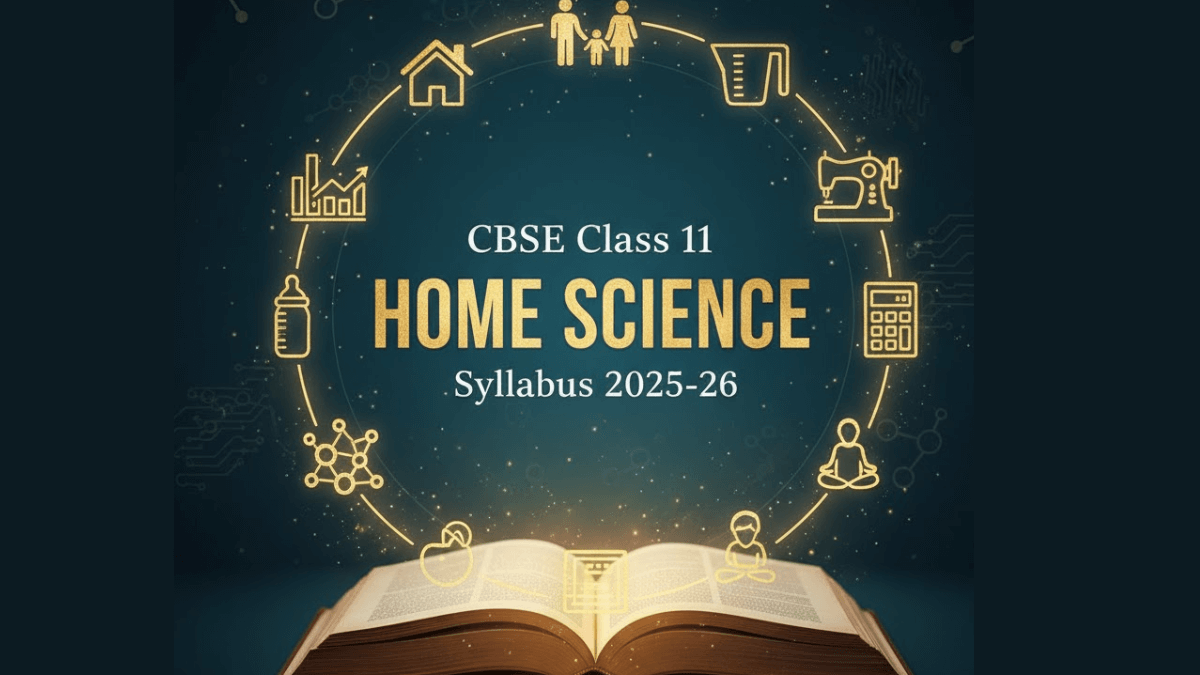





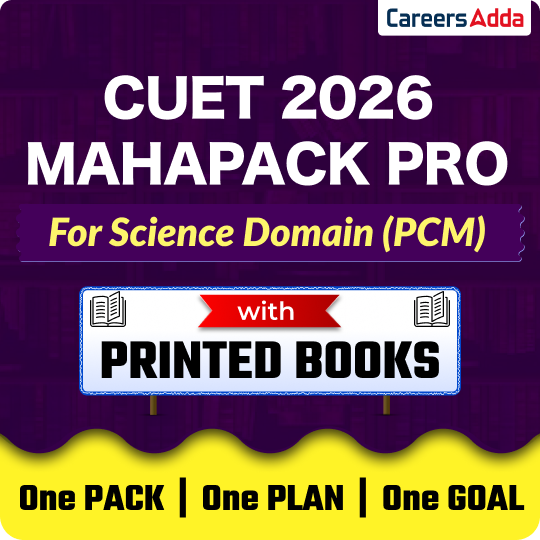



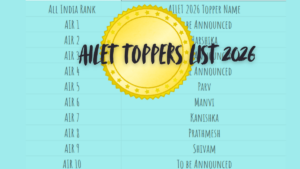 AILET 2026 AIR 1: Check Full Toppers Lis...
AILET 2026 AIR 1: Check Full Toppers Lis...
 AILET Result 2026 OUT, How to Download S...
AILET Result 2026 OUT, How to Download S...
 CUET PG Crash Course 2026: Subject-Wise ...
CUET PG Crash Course 2026: Subject-Wise ...


